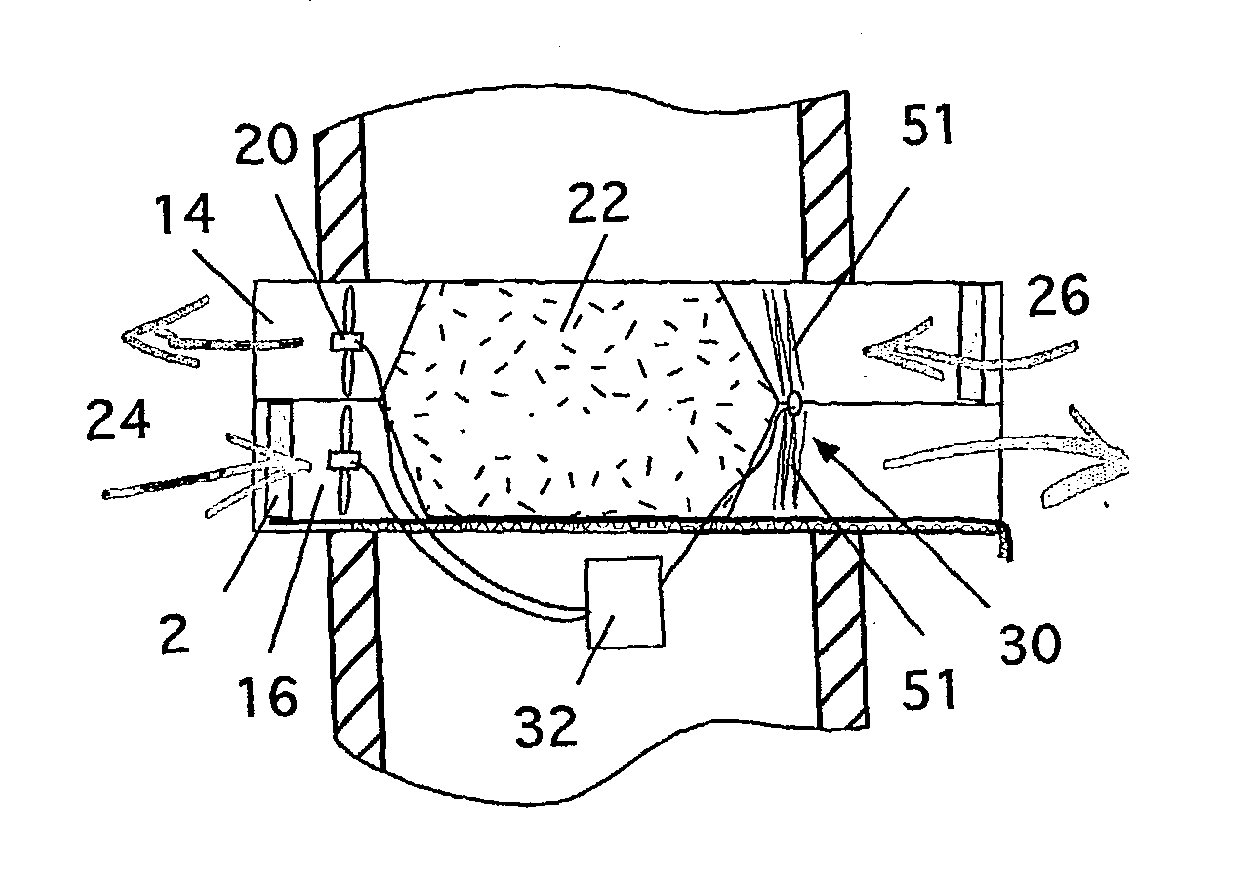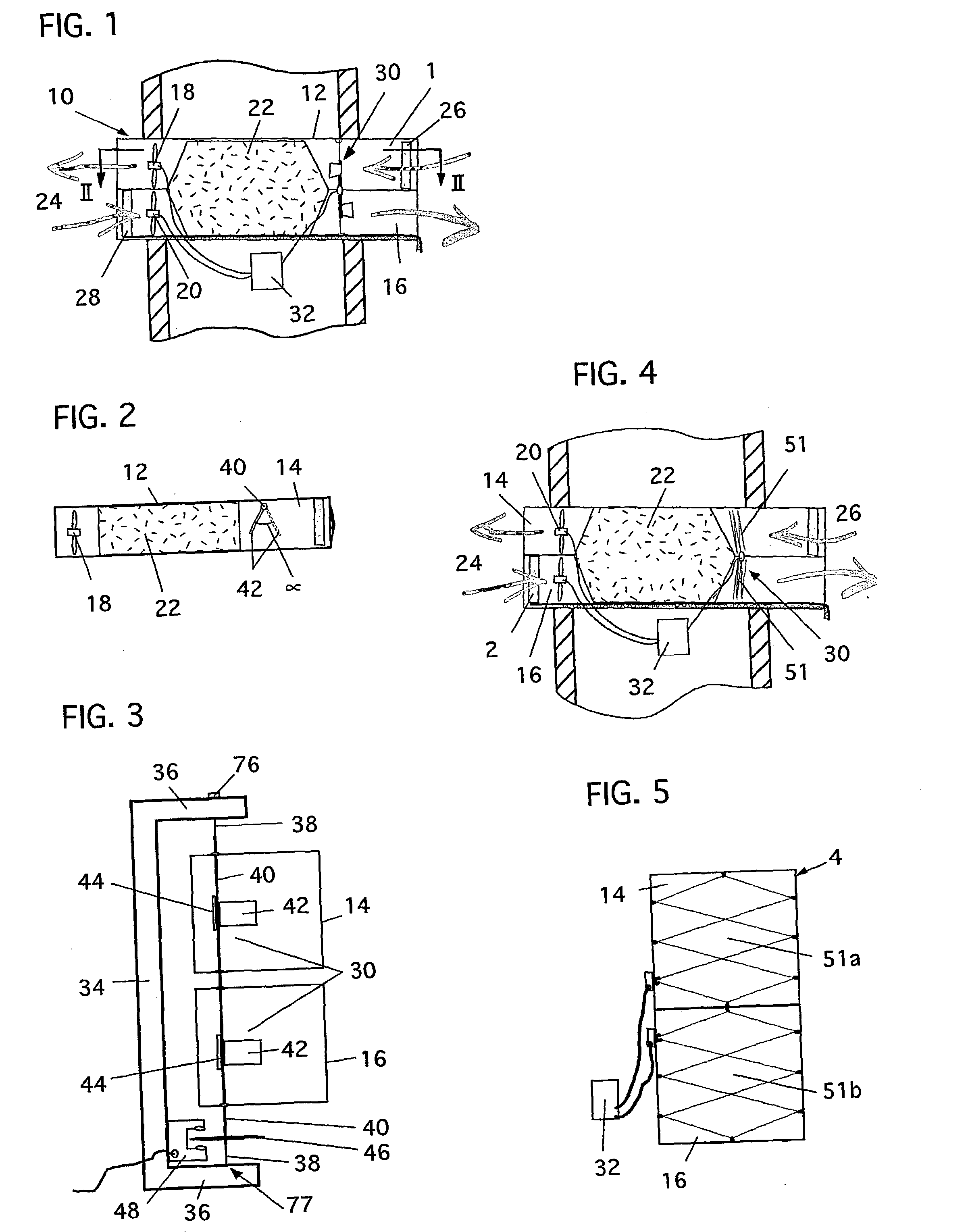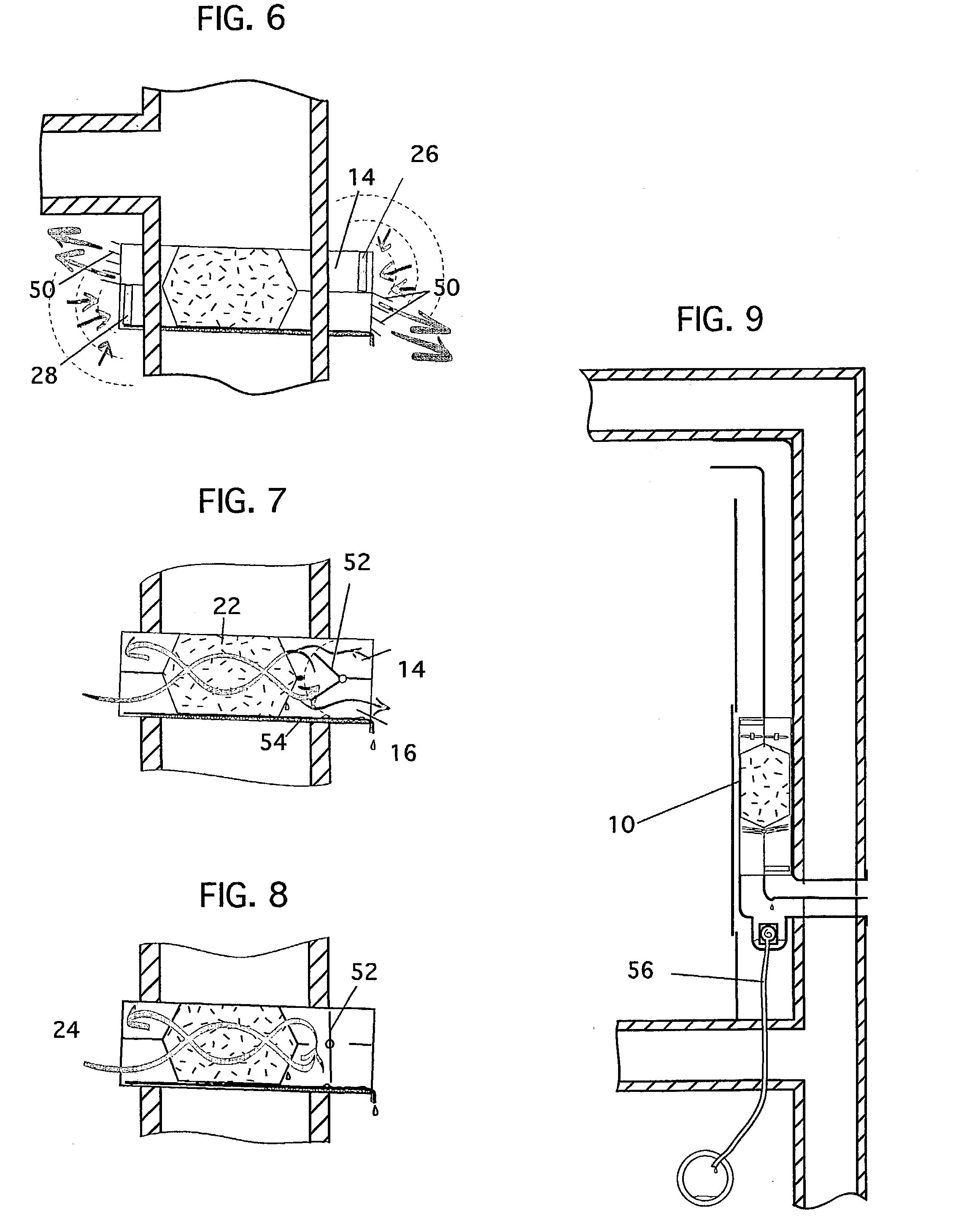Ventilation device
a technology of ventilation device and fan, which is applied in the direction of space heating and ventilation details, air heaters, domestic heating details, etc., can solve the problems of difficult cleaning, contaminated dust collecting surfaces, and inability to dampen sound ducts, so as to reduce the fan output of ingoing air
- Summary
- Abstract
- Description
- Claims
- Application Information
AI Technical Summary
Benefits of technology
Problems solved by technology
Method used
Image
Examples
Embodiment Construction
[0053] The ventilation device of the invention, denoted 10 in the drawings, is, according to FIGS. 1 and 2, constituted of a casing 12, an ingoing air duct 14, leading ingoing fresh air, and an outgoing air duct 16, leading used outgoing air. In each of the ducts a fan 18, 20 is arranged. Centrally in the casing, a heat-exchanger 22 of counter flow type is arranged, i.e., the heat-exchanger is divided into parallel passages, of which every second passage leads the ingoing air, and every other second passage leads the outgoing air in counter flow to and from the room 24, respectively. In the inlet of the respective channels 14, 16, a filter 26, 28 is placed, and in both channels a sensor 30, e.g., an instrument for the measurement of the amount of air flowing through each respective duct, is arranged. The instrument is connected to a control means 32 for controlling the velocity of the fans, so that the amount of air ventilated from the room 24 is substantially equal to the ingoing a...
PUM
 Login to View More
Login to View More Abstract
Description
Claims
Application Information
 Login to View More
Login to View More - R&D
- Intellectual Property
- Life Sciences
- Materials
- Tech Scout
- Unparalleled Data Quality
- Higher Quality Content
- 60% Fewer Hallucinations
Browse by: Latest US Patents, China's latest patents, Technical Efficacy Thesaurus, Application Domain, Technology Topic, Popular Technical Reports.
© 2025 PatSnap. All rights reserved.Legal|Privacy policy|Modern Slavery Act Transparency Statement|Sitemap|About US| Contact US: help@patsnap.com



